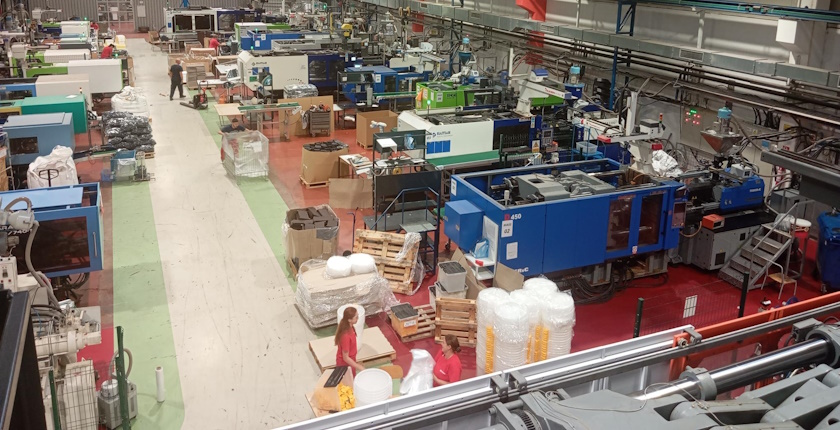
Plastoflex
Share
The small and medium-sized enterprise (SME) sector in Bosnia and Herzegovina (BiH) is the backbone of the economy and by far the largest employer, and now it is also becoming a driving force for decarbonization. While the first two achievements are something that is not a surprise, the third came somewhat unexpectedly. These companies, especially export-oriented ones, have been under pressure in recent years to apply ESG standards and report on the carbon footprint of their products. On top of that, electricity has risen by about 70 percent in recent years. Decarbonization has thus become a condition for survival, so they have turned to solutions in the projects of improving energy efficiency, increasing the use of renewable energy, and applying energy management and monitoring systems. Somehow, it is not surprising that decision-makers in BiH, through strategic documents and institutions, planned almost no assistance for the decarbonization of SMEs.
The success of small and medium-sized enterprises (SMEs) is perfectly illustrated by the project “Energy Transition Network in Industry in Bosnia and Herzegovina – METI Project”, which has shown that their decarbonization is possible and that it brings them various benefits.
The success is also evidenced by the fact that SMEs are the economic actors that have achieved the best results in decarbonization, by, among other things, installing about 150 MW of solar power plants, which is more than all public power companies in BiH combined.
The METI project, which was implemented in the past three years by the Centre for Sustainable Energy Transition – RESET, from Sarajevo in cooperation with the Enterprise Development Agency Eda from Banja Luka, and financed by Sweden, was dedicated to manufacturing SMEs with 50-250 workers. SMEs are the backbone of BiH’s economy: about 98 percent of private companies in BiH are small and medium-sized enterprises, which generate 70 percent of jobs and create 63 percent of the added value.
More than 30 companies participated in the METI project, most of which are export-oriented, and energy audits were carried out in all of them
More than 30 companies participated in the METI project, most of which are export-oriented, and in all of them energy audits were performed. The METI network, which operated for one year, involved nine SMEs that showed interest in starting the decarbonization process. The network is designed as a specific model to support the decarbonization of SMEs.
Members of the METI network are: five companies from Gračanica – Plastoflex, Variplast, Poly, BEMA BA and Berry Superfos Balkan, two from Prnjavor – Pekara Cvijeta and MI Trivas, Menprom from Tuzla and Rapić from Gradiška.
“Unfortunately, currently the authorities in BiH do not pay enough attention to the decarbonization of SMEs. In energy development strategies and plans, for example in the National Energy and Climate Plan (NECP), the decarbonization of industry is mainly based on measures applied in energy intensive industries (cement industry and coke production, iron and steel plants, forges and chemical industry)”, says Professor Mirza Kušljugić, energy expert and one of the founders of the RESET Centre.
SMEs face requirements to comply with ESG principles and carbon footprint reporting when participating in the production chain for export to the EU
That is why the decarbonization of manufacturing SMEs, which are considered non-energy intensive companies, is mostly approached on a voluntary basis. However, due to their importance for the economy, Kušljugić warns, their decarbonization represents an important component of the energy transition of industry and energy sector in BiH.
Despite the government’s negligence, SMEs have achieved impressive results in decarbonization over the past three years. Of course, under the pressure of increasing electricity prices, which have risen by more than 70 percent in BiH, and due to the requirement to respect ESG principles, for example, from banks, and reporting on the carbon dioxide (CO2) content in their products (i.e. carbon accounting reports when participating in the production chain for export to the EU). These requirements are also linked to the implementation of the Carbon Border Adjustment Mechanism (CBAM).
The SME sector is forced to change, and the best way, as Kušljugić says, to convince business owners of the effectiveness of a new concept or solution is to show it already implemented in their environment.
The METI network of nine companies is just that, and a particularly good example is the company Plastoflex from Gračanica, which has finalised a series of decarbonization measures by installing a digital energy monitoring system.
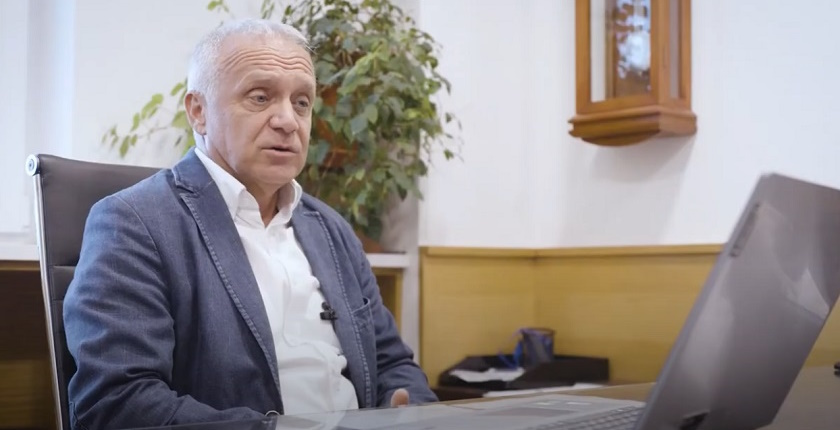
When asked what was the motive for participating in the project, Suad Helić, CEO and owner of Plastoflex company, says that the main motive was to increase energy efficiency, networking, exchange of experiences with companies that are similar to them, and the fact that the project leadership is taken over by experienced consultants.
“The project has achieved the expected results, energy is used in a more efficient way, energy audits have been conducted and a system of monitoring electricity consumption has been introduced,” said Helić.
Four practices have achieved the best results in the companies of the METI Network
The practices with the best results in the companies that participated in the activities of the METI network, as well as the practices that mostly contribute to decarbonization, can be grouped into four areas: improving energy efficiency, increasing the use of renewable energy sources, implementing energy management practices and energy monitoring systems.
It has been noted that all companies have started decarbonization process with the implementation of energy efficiency measures, and some have completed it with requirements for the introduction of energy management standards, energy monitoring systems and calculation of the CO2 footprint.
Increasing energy efficiency: Reducing costs by up to 75%

As part of the METI project, 30 energy audits were carried out and the preparation of ten specific projects was supported, many of which were implemented.
In general, SMEs have mainly implemented projects to improve energy efficiency in core technological processes, by purchasing more energy-efficient machines, and this is still a trend because modern, more energy-efficient machines have higher productivity and better automation systems.
Thus, within the METI network, the companies Plastoflex and BEMA BA have purchased modern machines with a servo drive for plastic injection moulding, where the costs for electricity and heat for cooling moulds is reduced by up to 70 percent.
Helić: The expected return on investment in the machine is 5 years
Suad Helić, CEO and owner of Plastoflex, says that about 400,000 Euros have been invested in the purchase of new machines, and the savings on electricity alone are 50 percent, and if we take into account that they are within the warranty period and that it is easier to maintain them, then the savings are about 70 percents compared to the existing hydraulic machines. The expected return on investment is five years.
In addition to the core processes, it is possible to apply energy efficiency measures in supporting processes, such as lighting, heating, air conditioning and cooling systems, preparation and distribution of compressed air, pumping and transport.
Plastoflex has invested 4,602 EUR in the replacement of classic lighting with LED lighting. The replacement was done in 2019 and the investment paid off in a year and a half. The savings amount to 60 percent compared to old lighting. A solution was also found for the warehouse, where LED lighting with motion sensors was installed, which cost 906 EUR, so now the lighting works only five percent during one eight-hour shift.
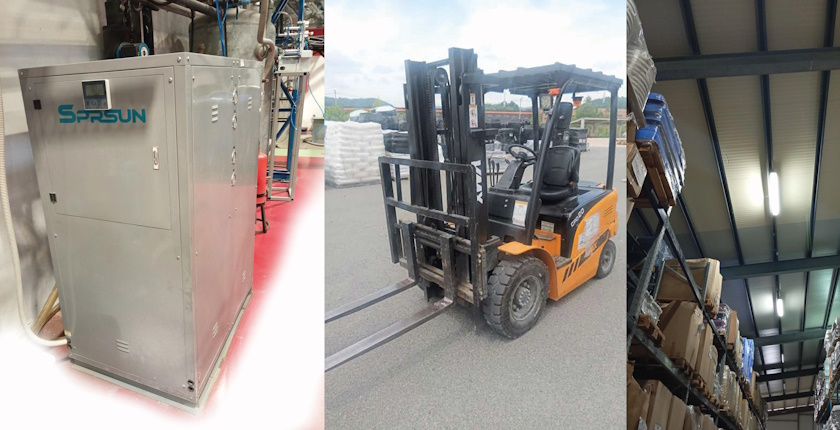
The cooling system of the machines in this Gračanica company has been improved by using coolers and heat pumps with the primary source of water from the underground well. The investment amounted to about 30,000 EUR, resulting in savings of about 30 percents. The expected return on investment is 3 years.
Among the practices that have achieved good results are the recuperation of waste heat and the electrification of processes, which directly use fossil fuels. The most common interventions in the field of electrification in companies that participated in the work of the METI network are related to the replacement of fossil fuel heating systems. For example, the replacement of coal and fuel oil with heat pumps, as done by Menprom, Plastoflex, Variplast, BEMA BA, or the replacement of diesel-powered forklifts with electric forklifts in the company Plastoflex.
Suad Helić says that the price of an electric forklift is 14,203 EUR, and the savings in energy costs are about 75 percent. Significant savings are also made on the maintenance costs of these forklifts because they have fewer parts, and the expected return on investment is seven years, he points out.
Increasing the use of renewable energy: Solar will be even more cost-effective
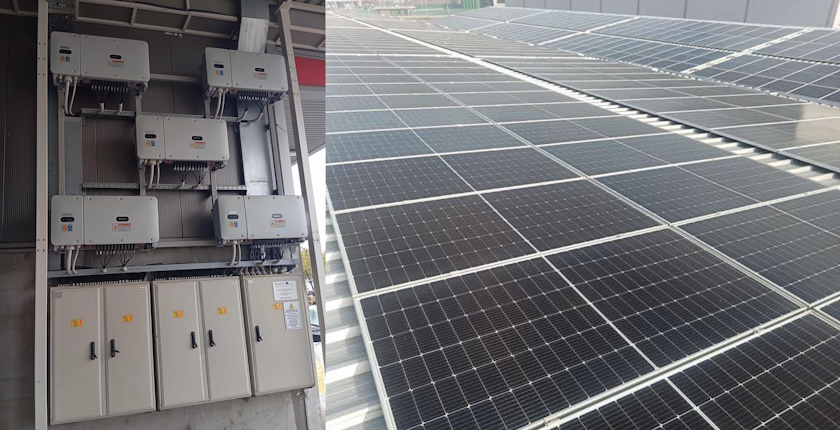
Of course, these are primarily photovoltaic (PV) power plants. More than 50 percent of the SMEs participating in the METI project have installed solar power plants for their own consumption. In the municipality of Gračanica, from which most of the SMEs were involved, more than five megawatts were installed. Of course, the biggest driver was the rise in electricity price.
Although, according to the existing legal solutions in BiH, the surplus of electricity produced in PV systems cannot be injected in the distribution network, the profitability of this measure is at the level of 5-7 years, mainly due to a significant drop in the prices of components of such systems.
The following SMEs from the METI network during the implementation of the project, installed photovoltaic systems: Plastoflex, Variplast, BEMA BA, Poly and Menprom.
Kušljugić: Companies will be able to acquire the status of an active customer, i.e. to sell the surplus of electricity produced.
Plastoflex has installed solar panels with a power of 450 kW, which cover 25-30 percent of annual electricity consumption. The investment was 277,000 EUR, and estimates say that it will pay off in five years.
Professor Mirza Kušljugić says that the profitability of such investments is expected to increase in the coming period, because legislation is being prepared that will enable companies to acquire the status of an active customer, i.e. to place the surplus of produced electricity, for example, during non-working days, in the distribution network.
In some SMEs, hot water heating solutions have been applied using solar thermal collector systems. Replacing fossil fuel boilers with biomass or pellet boilers is also one of the measures some SMEs have implemented.
Introduction of energy management and energy monitoring as the basis of all measures
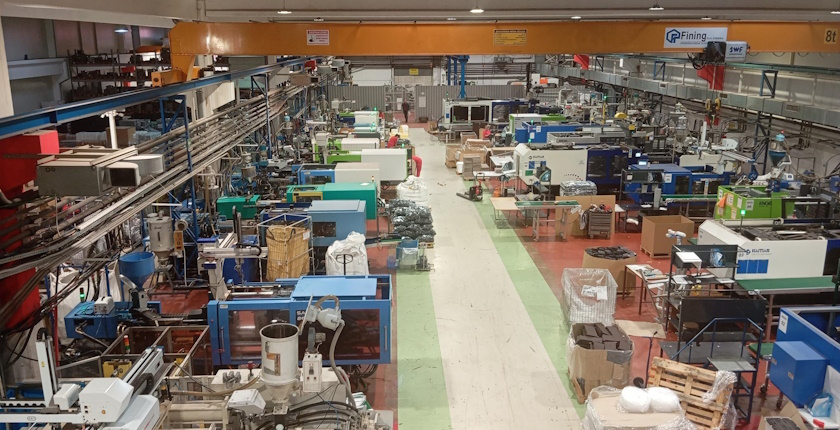
In the industrial SMEs energy management systems (EMS) can save up to 30 percent in energy costs without significant investments in equipment. But the biggest problem for all SMEs is the lack of qualified personnel to perform the tasks of energy managers.
It is a big cost for SMEs to hire an energy manager, and it is difficult for them to attract and retain qualified experts of this profile, emphasizes Professor Kušljugić. This, he adds, is also a challenge in the EU. Currently, only one large company in the industry in BiH, a cement factory, has an employed energy manager.
None of the SMEs in the METI network has a person in charge of energy management activities. That is why, during the implementation of the METI project, the model of an external, shared energy manager in Menprom company was tested. Experience has shown, as Kušljugić points out, that such a model can be successfully applied in SMEs in BiH, so a large number of companies have shown interest in applying this model.
None of the companies in the METI network had an energy monitoring system installed, and the reason is the high cost of available commercial solutions
In several companies, such as Menprom, Reflex, Mladex Pak, BEMA BA and Variplast, preparations have been carried out for the introduction of energy management procedures according to ISO 50001 Standard without certification (so called ISO 50001 Light standard). Plastoflex has completed the preparation for certification according to the ISO 50001 standard and the certification procedure is expected soon.
Although in the story of the METI project energy monitoring appears at the end, it is clear that this is not due to a lack of importance. Namely, without it, there is no application of energy management, nor the ISO 14067 standard, which is necessary for the application of ESG principles, as well as for reporting on the carbon footprint of products.
Kušljugić recalls that none of the companies in the METI network had an energy monitoring system installed. The reason for this situation is primarily the high price of available commercial solutions for digital energy monitoring systems (hardware and software) from renowned manufacturers, such as Siemens, Schneider, ABB, and GE.
The energy monitoring system developed during the project is presented in mid-September at the SAPO 2024 business meetings in Gračanica
That is why during the operation of the METI network, an endogenous energy monitoring system has been developed. Damir Kapidžić, a certified energy auditor and energy manager, says that it is a low-cost solution based on open-source software that is affordable for SMEs. The most important thing is that the software adapts to the company needs, not the other way around, he adds.
The cost of the system (hardware and software) is less than 30 percent of the price of commercially available systems. RESET expects that in this way, the process of digitalization of SMEs will be truly initiated. A pilot energy monitoring system of this sort has been implemented in the company Plastoflex, in this phase with 30 measuring points. It is the only company in the METI network which has done so.
Suad Helić, owner and CEO of Plastoflex, says that the equipment for the energy monitoring system has so far cost about $3,000 for 30 metering points (i.e. production machines). The development of the system is still in progress and the amount of the total investment costs will be known later, Helić said.
The energy monitoring system developed during the project was presented in mid-September at the SAPO 2024 business meetings in Gračanica. RESET says that although the METI project has been completed, it is currently working with five companies from the network on further development of applications in the developed energy monitoring software that are tailored to user requirements.
Kušljugić: An ecosystem is necessary to support decarbonization of SMEs
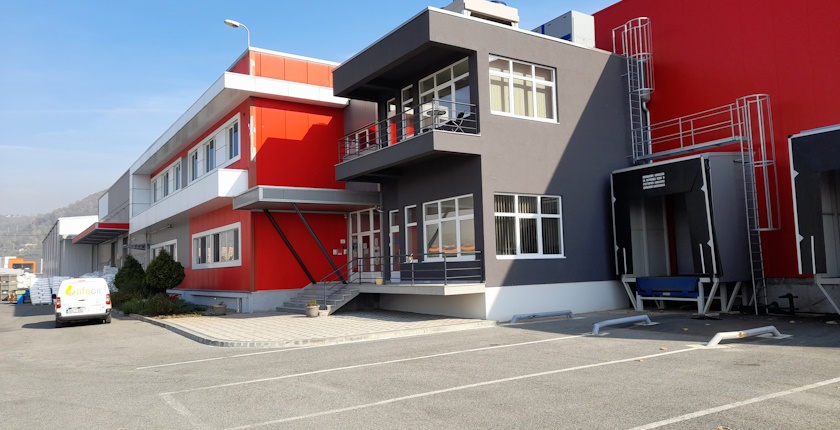
Drawing the line, Professor Mirza Kušljugić says that the project has shown that small and medium-sized enterprises should have an ecosystem of support for decarbonization that is systematic, predictable and efficient. The establishment and functioning of such a system is the obligation of governments at all levels, because only a partnership between SMEs and governments can result in a successful decarbonization of the industry.
Based on the experiences and lessons learned during the implementation of the project, policies and measures have been proposed that complement the proposals from the NECP BiH and that can contribute to the already started activities on the decarbonization of SMEs thus becoming part of a comprehensive and systematic strategy for the decarbonization of industry. You can read them in the document Proposal of Policies and Measures to Support Small and Medium-Sized Enterprises in the Decarbonization Process.
____________________________________________________________________________________
What is Energy Monitoring and How Does It Help Businesses?
Energy monitoring is the continuous measurement, acquisition, storage and analysis of data related to the use of energy in accordance with the characteristics of the energy product being monitored. In addition to the volume of data collected, the frequency of its measurement is also very important. The energy monitoring system should be in line with the technological and business needs of the company.
Energy monitoring, by itself, does not achieve savings, but it is an indispensable tool for very precise identification of possible savings, their calculation and monitoring of the results of implemented measures. Depending on the measures implemented and the condition of the production equipment, direct savings in energy consumption of 5-20 percent can be achieved.
Such measures are most often identified and implemented in the first year of using energy monitoring, as part of the energy management system, after which the optimal level of energy efficiency is reached, which needs to be constantly monitored and maintained. The next level of application refers to the use of energy monitoring data in conjunction with data from other business and technological processes. Other savings can also be achieved through the optimization of auxiliary technological systems and production processes, as well as the improvement of maintenance.
Damir Kapidžić, a certified energy auditor and energy manager, says that there are a large number of commercial energy monitoring systems on the market, which are not affordable to SMEs due to their price. On the other hand, small and medium-sized business owners are also entrepreneurs, who most often try to achieve what they need by using locally available resources. That is how the idea was created to develop an energy monitoring system that is cost-effective and can meet all the functional requirements of energy monitoring.
That is why, as he points out, the design of this monitoring system took care to keep costs to a minimum. Above all, the existing standards such as TCP/IP and Modbus communication standards are used, as this allows the selection of appropriate technical and application components. Kapidžić says that there are a large number of different types of digital smart meters, sensors and programmable IoT devices on the market, so there were no problems in choosing and purchasing affordable equipment.
For the software applications, free open source solutions are chosen. Linux is used as the operating system, and a dedicated InfluxDB OSS database is used to store time series data. Python was used for some of the analysis. In this way, a flexible energy monitoring system has been obtained, which can be upgraded and, if necessary, integrated with other business and technological systems, emphasizes Kapidžić.

In terms of business operations, today it is no longer just a matter of simple monitoring of energy costs, because the use of modern digital energy monitoring systems enables a number of new applications of the obtained data on energy consumption, their technological characteristics and performance of use in the context of other business and technological processes.
A modern digital energy monitoring system can have multiple purposes in a company and is most often, according to Kapidžić, part of the energy management system. Primarily, he adds, a well-installed energy monitoring system is directly related to the energy efficiency of machines and the production process. In addition, analyses of energy consumption profiles can enable better allocation and organization of technological and business processes in order to balance consumption and reduce costs.
Kapidžić points out that today energy is becoming an increasingly important and complex topic when it comes to efficiency and business sustainability. There are a number of new challenges posed by the energy transition, the net-zero CO2 economy, ESG reporting and other regulatory requirements.
An energy management system based on energy monitoring can help manufacturing SMEs define their energy transition path and appropriate decarbonization strategy by providing reliable information for analysis and decision-making, as well as for regulatory reporting.
For companies that have installed photovoltaic power plants for their own consumption, it is very important to have detailed information on how, where and when energy products are used for reasons such as forecasting consumption, exchanging or selling surplus energy.


















Be the first one to comment on this article.